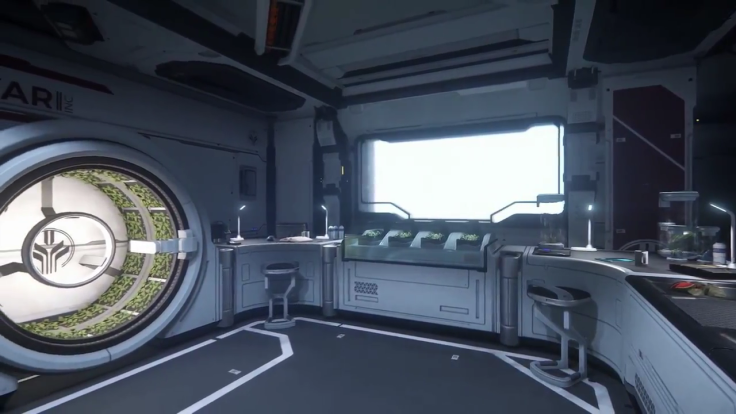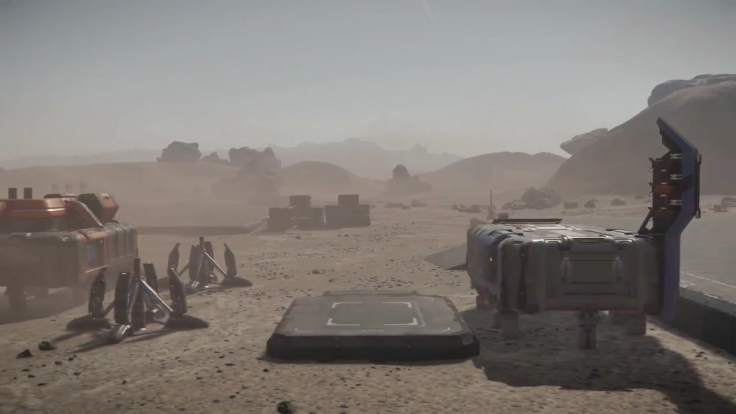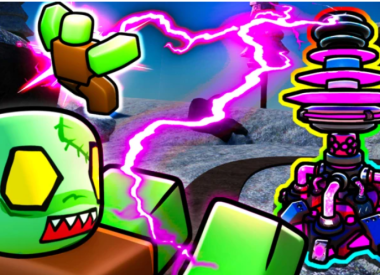Star Citizen development continues, and this week’s episode of Around The Verse focuses on the latest alpha 3.0 updates and the environmental storytelling of surface outposts. There’s a lot to unpack in this 30-minute chunk, so let’s get started.
Beginning with the latest on alpha 3.0 , there are currently about 80 must-fix issues still left to address before any sort of public release, and some of those problems are new. The Cloud Imperium Games team specifically mentioned that conflicts remain with shopkeeper item placement, mission giver Miles Eckhart, ship doors and an improving but still buggy patcher tool.

One developer also described certain usable objects as “broken,” like when a character jitters when grabbing a cup and then refuses to interact with any other objects in the area. With regard to lightspeed, it’s still too common for players to crash into each other, explode or even become a part of the solar system itself when unexpectedly confronted by other players.
While the number of bugs has significantly decreased in recent days, there’s no denying the Cloud Imperium Games team still has plenty of work ahead. Lead Prop Artist Ben Curtis described the QA process as “therapeutic,” explaining, “We have had some interesting bugs I guess. I think because when the project first started a lot of this stuff was more of a pipe dream we didn’t necessarily have the tech to do it. Now that we’ve got the tech to do it, you realize all that ‘it doesn’t really matter if something’s not quite right.’ It’s now really, really important.”
Beyond 3.0, however, much of the emphasis in this week’s ATV focused on surface outposts and their role in environmental storytelling. It’s a matter of making sure each outpost has the right props, scenery and location in order to properly convey the established lore.
For a massive, procedurally generated game like Star Citizen, the first step in accomplishing that goal is actually quite unique. The location for each outpost must be physically scouted out in the way a carpenter might look for a plot of land to build a house. Environmental Art Director Ian Leyland described several instances in which his team found a suitable spot for a post only to move it to a better place days later. So-called “natural happy accidents” from stars and other factors make each chosen locale feel believable on a larger scale. Even aspects like planetary rotation must be considered as they can change the lighting of certain environments in drastic ways.
Once the coordinates have been settled, Leyland’s team adds accoutrements like weathering, wall design and decals to represent the owners. Certain blending techniques can be handled procedurally.
This same level of care must be brought inside as well. If the outpost is a medical wing, it must have all the supplies necessary to handle that task. Does the civilization treat its workers well? A clean environment would reflect that. If the outpost is independently owned, it might have a more ramshackle object set to convey that attitude.

The greatest challenge so far has been developing a toolset in which most of the creative heavy lifting can be done by algorithms. As it stands now, each outpost must be transferred through a string of about nine different steps, from object containers to outpost clusters to moons and all the way out to the rest of the solar system. Work is being done to lighten that load for artists, and it’s all in the service of automation.
If everything is linked and named correctly in an algorithm, it’s essentially the difference between having to manually edit a thousand outposts to fix a single issue and instantly reflecting that single change across an entire cluster.
Perhaps Senior Lead Environment Artist Eddie Hilditch offers the best explanation:
“It may be complex now in terms of initial setup, but once the pipeline tools come in it should be a lot easier to maintain than if we were making a thousand custom outposts... It's initial complexity and initial beating your head against the wall of trying to figure out the system, but once that system's in place and the tools are in place the end result is quick and easy to get.”
Star Citizen is in alpha for Kickstarter backers on PC. The game’s next major news update will arrive during a Gamescom stream at 3 p.m. EDT on Aug. 25.
What is your hot take on Star Citizen right now? Will alpha 3.0 actually release in September? Tell us in the comments section!


















